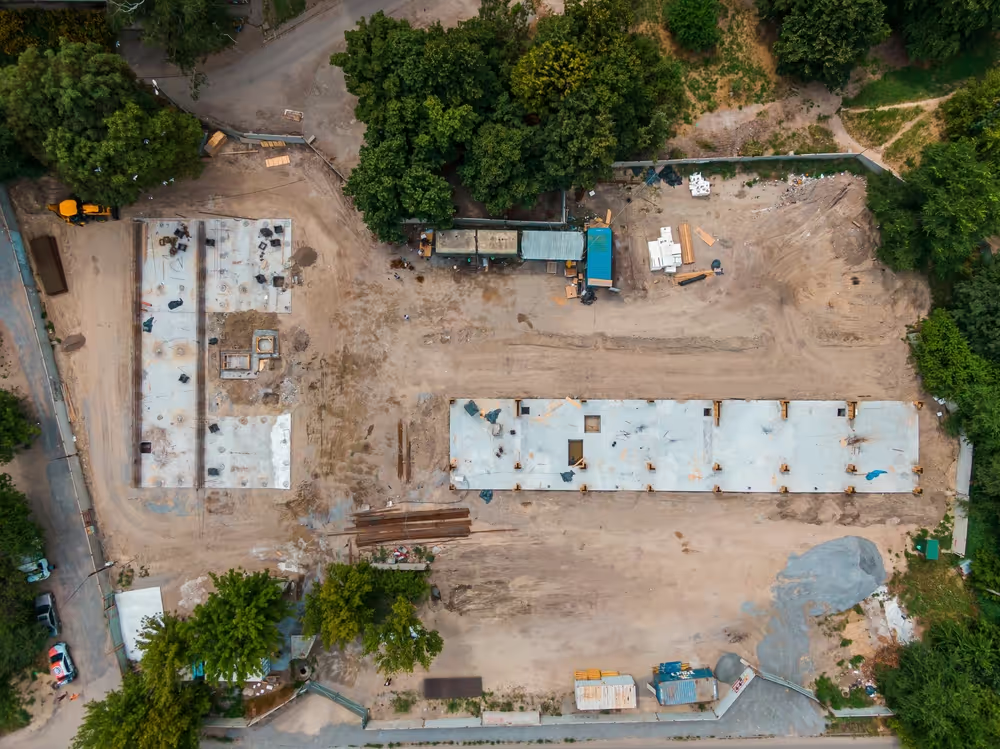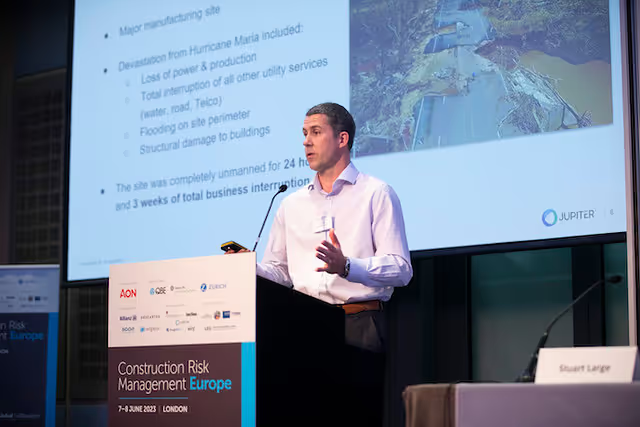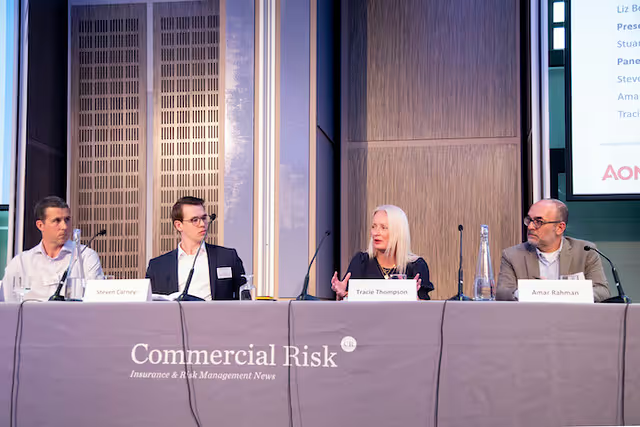
Future projections vs. historical data hold the key to understanding climate change’s rising impacts on construction projects
By Stuart Large, Business Development Director, Jupiter
In this blog, I highlight the key points from my panel discussion with Zurich Insurance, Aon and Copenhagen Infrastructure Service Company (CISC) during the Construction Risk Management Conference that took place in London on Thursday, June 8, 2023.

No industry is immune to the effects of global climate change and that is certainly true of the construction sector. Extreme weather events (caused by climate change) affect 45% of construction projects globally according to the Air Force Institute of Technology, and the resulting costs are in the billions in increased expenses and lost revenues.
Where are these costs and losses coming from? Project delays, damaged materials and supply chain disruptions stemming from the effects of climate change. Severe weather events, including hurricanes, tornadoes and wildfires, can damage buildings under construction or result in project delays as builders wait months for critical materials that are stuck somewhere in the supply chain.
What construction companies, their risk managers and their insurers need is future-forward climate risk analytics vs. historical data when assessing how climate change can, and will, impact their business and the global economy.
Amar Rahman at Zurich said “it’s like looking in a rear view mirror to understand what the future holds, and that doesn’t work.” Risk managers are turning to forward-looking climate risk modeling to understand looming threats and find new ways to adapt. During my discussion at the conference, the panel members discussed how climate change is impacting construction risk management and how historical data is a poor indicator of future trends.
What historical data can show is a trend for higher weather-related losses over the last 20 or 30 years. But the pace of losses from most perils is accelerating and forward-looking models are a much better indicator for future trends. Hampered by a historical focus and other shortcomings, cat models can’t adequately quantify future risk in a rapidly changing climate vs analytics based on best-in-science climate models give the construction industry and insurers a far-sighted assessment of climate-driven impacts.
If we look at return periods for severe weather events we see that they are rapidly shortening. When we talk about one-in-500-year events, we know that those assumptions are false. The US Gulf of Mexico has had three one-in-500-year events in 5 years so return periods are much shorter than we originally thought.
When asked for his perspective, Amar Rahman, global head of climate change resilience services at Zurich said “people tend to think of perils, such as wind or flood, in isolation, but there is now more and more interaction between perils.” “Sea level rises and increasing hurricanes and tornadoes are leading to flooding deeper inland, impacting places that traditionally have not had flooding.”
With these cascading events, construction risk managers are looking to build resilience to future proof their businesses so that when presenting risk to the insurance market, they are in a better position. That was the opinion of Tracie Thompson, global head of ESG and climate at Aon. She noted that underwriting is moving from an art to a science, based on forward thinking.
“It’s about how we can help clients build resilience based on the data that allows them to access risk capital. And historical data is not lending itself to underwriting models anymore.”

On my panel was risk manager Steven Carney from Copenhagen Infrastructure Service Company (CISC), who talked about how risk professionals are using models at a very early stage in developing projects. “We are doing early nat cat screenings, both to see the risks right now, as well as looking at the lifetime of the asset,” he said. If you access the technology earlier you can avoid many issues, he added.
The one thing that rang true for the audience was not only that climate change is here and it’s already impacting the construction industry, but that forward-looking climate risk modeling is a necessity for planning, adaptation and building resilience.
To learn more about how Jupiter can help your construction firm assess future physical climate risks, reach out or request a demo.
.webp)
